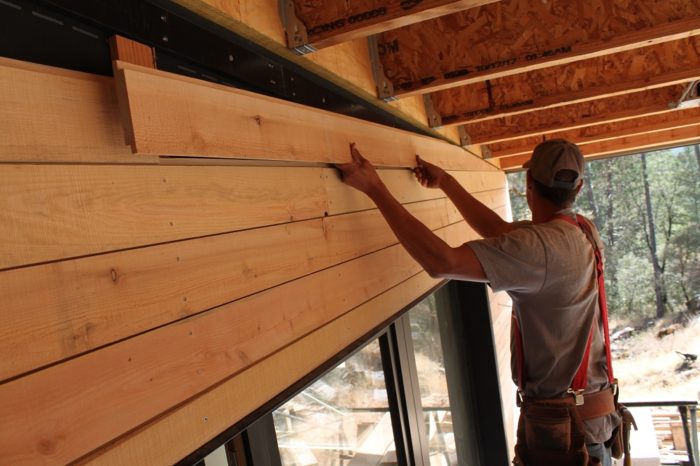There are several benefits to re-siding a home or business. A fresh facelift increases property value and modernizes energy efficiency of buildings. Further, new siding also increases curb appeal since it affords the opportunity to select an entirely new colour scheme or design. Here, let us compare the difference between Cedar and Hardie Plank siding.
Before siding selection, you should consider the amount of siding required. In addition, contact a professional siding company (like Phoenix) to obtain a quote.
CEDAR SIDING
Cedar wood siding is the more natural option of the two. Sustainably sourced on the West Coast of British Columbia, cedar has many attractive features and few drawbacks.
Pros:
- 100% biodegradable for an eco-friendly home exterior.
- Easily painted and stained to attain several distinctive styles.
- Easy to install; therefore, DIY friendly.
- When properly maintained, cedar siding can last as long as 75 years. It may also be ordered pre-stained which provides additional weatherproofing properties.
- Highly attractive in appearance, cedar wood siding can be stained any color, such as white cedar for a stunning West Coast appearance.
- May be cut into shingles and shakes for a uniquely rustic style.
- Maintains a timeless appeal that most other types of siding material fail to achieve.
- Cedar has superior noise and thermal insulation characteristics.
- Natural tannins preserve cedar, resulting in less rot and mildew.
- Both Yellow and Red Cedar have inherently pleasant aromas.
- More resistant to termites and other insects than other wood species.
- Does not easily warp, split, or swell when exposed to moisture.
Cons:
- Cedar wood is flammable unless properly fire treated.
- Regular maintenance is required in the manner of re-painting and re-staining. This should be carried out every 3-5 years.
- Cedar is more prone to woodpecker damage than other types of material.
- More expensive than alternative siding materials.
- Prone to discoloration and mildew over time.
HARDIE PLANK SIDING
Fiber cement board siding, like Hardie Plank, was created by James Hardie. This man-made material comprises a blend of sand, cement, and cellulose fiber composite. Generally low maintenance, it also scores high in the longevity category.
Pros:
- Comes in an array of textures and colours, making it a versatile choice for designers and homeowners alike.
- Often comes with an attractive 20-40-year limited warranty. Hardie Plank is also resistant to salt-spray from the ocean—impressive!
- Can be manufactured to resemble other types of siding material, such as cedar shingles, wood shake, and wood plank siding.
- Since the material is mostly sand and cement, it is fire-resistant. This is an excellent quality throughout BC fire season.
- Manufactured free of toxic materials.
- Insect and rot resistant.
- One of the more affordable siding choices.
- Withstands harsh weather; Hardie Plank remains durable under hailstorms and wicked winds.
Cons:
- This type of material is weighty and therefore requires more labour to install.
- Hardie Plank is not completely low maintenance. The colour warranty only covers for 15 years. It will peel and chip; thereby, this siding requires periodic re-painting.
- Cannot be manufactured to match naturally weathered wood siding.
- Can be ordered pre-coloured or must be painted after installation.
Comparing the cost of cedar versus Hardie Plank, cedar comes at a much bigger cost, both for materials and maintenance.
Now you know the pros and cons of Hardie Plank and cedar siding. Lucky for you, our siding experts at Phoenix Siding can assist in making an informed and cost-effective siding choice.


